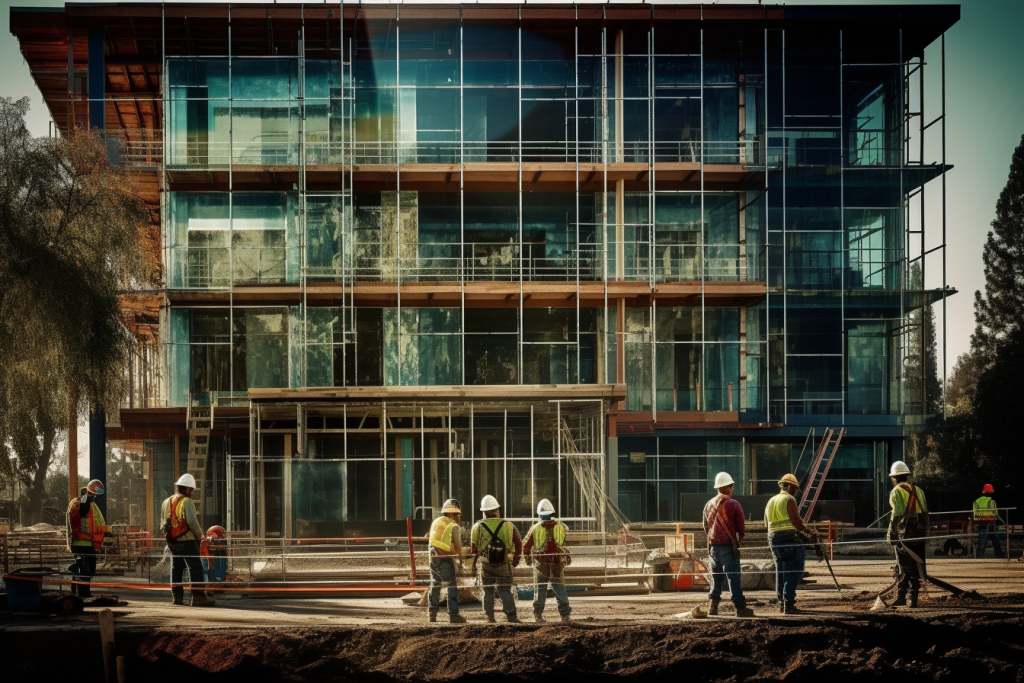Top 10 Best Practices for Taking and Managing Construction Photography
Table of Contents:

In the realm of construction, a picture truly speaks volumes. It has the power to transcend words and convey the essence of a project. Project photos serve as visual narratives, capturing not only the physical progress but also the underlying dedication, expertise, and teamwork that go into every construction endeavor. They become timeless records of the challenges faced, the triumphs achieved, and the journey undertaken.
Project photos serve multiple purposes beyond mere documentation.
They are powerful tools for effective communication, allowing project stakeholders, clients, and team members to visually understand and appreciate the project’s evolution.
These snapshots provide a window into the construction process, showcasing completed milestones and showcasing the intricate details that set a project apart. By carefully crafting and curating these images, construction professionals can create a compelling visual story that resonates with the intended audience.
Effective record-keeping is another critical aspect that project photos fulfill. By capturing key stages and preserving crucial details, they become a valuable resource for future reference, analysis, and decision-making. Project managers can use these photos to review construction techniques, evaluate progress, and identify areas for improvement in future projects. Additionally, project photos serve as evidence of compliance with regulations and specifications, providing a visual record of adherence to quality standards.
The marketing potential of well-crafted project photos should not be underestimated. In today’s visually-oriented world, captivating images have the ability to captivate potential clients, investors, and partners. They can be utilized in promotional materials, presentations, and online platforms to showcase the expertise and capabilities of a construction firm. By sharing these images strategically, construction professionals can attract new opportunities and build a strong brand reputation in the industry.
Mark S. | Senior Superintendent
“It’s helpful, especially with these tighter spaces. It makes the trade partners plan better.”
To ensure that every snapshot tells a compelling story, it is crucial to follow best practices for taking and managing construction project photos.
In this comprehensive guide, we unveil the top ten best practices that will elevate your project photography to new heights. From defining your purpose and planning ahead to capturing progress, highlighting details, and sharing collaboratively, these practices will empower you to create visually stunning and impactful images.
By adopting these best practices, construction professionals can harness the full potential of project photos. Each image becomes a testament to the hard work, skill, and dedication poured into the construction process. It becomes a visual representation of the construction symphony, harmonizing the efforts of countless individuals and capturing the essence of a project. So, grab your camera, embark on your photo journey, and let each snapshot tell a captivating story of construction brilliance.
1. Define Your Purpose
Before embarking on your project photo journey, clarify the purpose behind the photos. Are you aiming to track progress, highlight specific features, or promote the project? Understanding the intended use will guide your photo-taking approach.
2. Plan and Prepare
Familiarize yourself with the project’s timeline, key milestones, and critical areas to capture before stepping onto the construction site. Prepare the necessary equipment, including a high-quality camera, tripod, and appropriate lenses for capturing different perspectives.
3. Safety First
Prioritize safety by wearing the required personal protective equipment (PPE) and following all safety protocols. Be mindful of potential hazards and adhere to site-specific rules and regulations.
4. Timing is Key
Choose the ideal time of day to capture your project photos. Consider factors such as lighting conditions, shadows, and the specific areas you want to emphasize. Early morning or late afternoon often provides soft, flattering light.
5. Showcasing Progress
Focus on capturing consistent shots from predetermined vantage points to effectively track project progress. Use landmarks, unique features, or recognizable elements to create a visual timeline of construction stages.
6. Highlighting Key Details
Zoom in on intricate details, craftsmanship, and unique elements that showcase the project’s quality. By capturing these details, you create a comprehensive visual record that can be utilized for documentation and future reference.
7. Contextualize the Setting
Frame your shots to include the surrounding environment, providing context and situating the construction within its broader context. This helps viewers grasp the project’s scale, location, and relationship with the surroundings.
8. Variety in Composition
Experiment with different angles, perspectives, and compositions to add visual interest. Consider capturing shots from above, below, or unconventional viewpoints to provide a fresh perspective on the construction process.
9. Consistent Documentation
Establish a systematic approach to organizing and managing your project photos. Create a file-naming convention that includes relevant information such as date, location, and specific area or aspect captured. Utilize folders or digital albums to categorize images based on construction stages or project areas.
StruxHub makes it easy to store and contextualize project photos so your team can reference them later. Instead of having a bunch of random photos cluttering up your phone’s cloud storage, StruxHub allows you to snap a quick picture and tie it to a location and action item – like a punch list.
10. Collaborate and Share
Regularly share project photos with relevant stakeholders, clients, marketing teams, and future references. Ensure clear communication and foster collaboration by leveraging social media platforms or project-specific websites to showcase the project’s progress and generate interest.
By following these best practices, construction professionals can unlock the true potential of project photos as invaluable tools for documentation, communication, and marketing. Each click of the shutter becomes a testament to the brilliance and artistry of the construction process. So, grab your camera, embrace your inner artist, and let your project photos tell a captivating story of construction excellence.
David S. | Senior Project Manager | Truebeck Construction
“Before StruxHub, we were using a binder with sign-in/sign-out times for a $500M project with 350 guys on the jobsite. After StruxHub, we were able to limit our delivery spaces to the existing loading docks of the two buildings and get people in and out more efficiently. We’ve seen StruxHub take off immensely. People are planning better, subcontractors appreciate it more, and it really limits how much time is needed in the office to manage the delivery process. StruxHub has helped us tremendously.”
StruxHub is a construction project management software that helps you manage projects from start to finish. It offers features like task management, document management, and communication tools. StruxHub can help you save time and money, improve communication, collaboration, and decision-making.
To learn more about how StruxHub can streamline your construction management processes, request a demo today. By completing our form, you’ll hear from our team soon to discuss how StruxHub can help you:
- Schedule construction material deliveries with your trades
- Coordinate construction site resources and on-site logistics
- Digitize work permits and inspection forms
- Communicate and track P6 and Excel schedules
- Broadcast announcements to all construction workers
Don’t miss out on the opportunity to optimize your construction management processes with StruxHub. Sign up for a free demo today.

StruxHub
Experience the power of StruxHub today and witness firsthand how it can revolutionize your construction operations.


